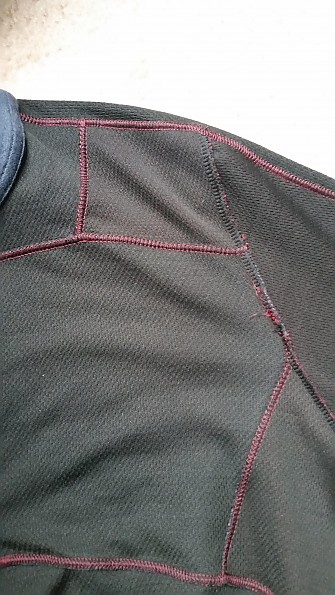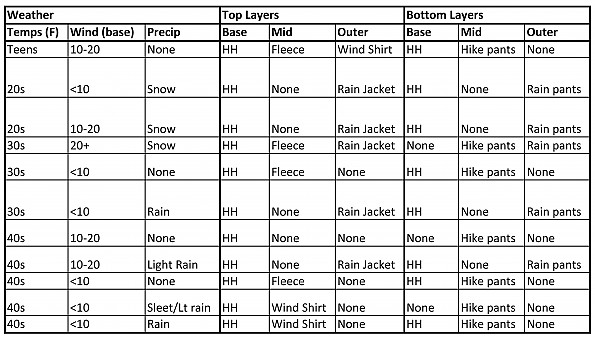Helly Hansen HH Lifa Merino 1/2 Zip

An excellent base layer choice from a company that understands cold and wet weather. The HH LIFA Merino 2-layer construction keeps you warm and dry in all kinds of conditions, and feels great when wearing it. Watch out for the “athletic” fit when purchasing, but if you get the right fit this base layer will keep you comfortable in rain, sleet, and snow well below freezing.
Pros
- Comfortable
- Wicks moisture from skin
- Warm even when wet
- Zip top allows easy adjustable venting
- Odor resistant
- Dries quicker than 100% wool
- Accurate sizing
- Wears well
Cons
- Athletic fit may not work for all
- Washing/drying care needed
- Few loose threads—no structural issues
- Collar tends to turn up if you are not careful
- No hood or thumb loops, if you like those

Note: This is a companion review along with the Helly Hansen LIFA Merino Pant.
Product Description
Helly Hansen (HH) LIFA Merino Base Layers are designed for cold weather with a two-layer construction consisting of their synthetic LIFA Stay Warm Technology interior and 100% Merino wool exterior.
Their LIFA inner layer above is designed to push moisture away from the skin while being itch-free and comfortable. (Note that the seemingly loose thread above is actually just the outer and inner fabrics woven together along that seam.)
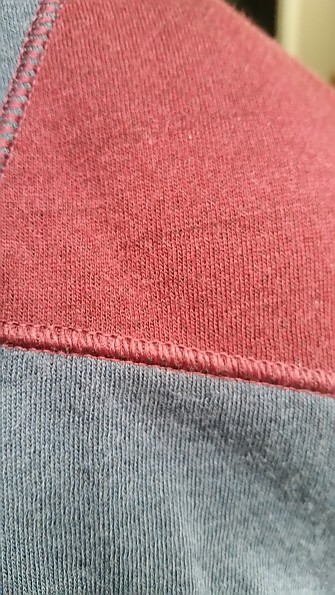
The wool exterior outer layer pictured above provides extra warmth and helps wick the moisture away. The HH LIFA Merino 1/2 Zip top has this two-layer construction with flat lock seams.
HH states that it is their warmest baselayer designed for any activity in cold weather. This model has a half zip to allow for additional venting on those high cardio days climbing hills.
Product Features from HH’s website include:
- 2-in-1 baselayer
- 2-layer construction
- 100% merino wool exterior
- Lifa technology interior
- Lifa Flow construction
- 1/2 Zip chest construction
- Non itch
- Flat lock seams
- 225g/m2
Testing Conditions
I wore the HH LIFA Merino base layers from November 2017 to March 2018. Activities included numerous (20+) day hikes of 5-12 miles and four weekend backpacking trips from 20 to 35 miles. I endured prolonged exposure to wind, rain, sleet, and snow in temperatures ranging from around 10 to 50 degrees. This included an overnight trip (two long days) in 20 degrees F during a one-foot snowstorm (the HH top is under there doing its job...

and a three-day (two-night) trip down to the low teens with around 36 hours of rain, fog, and sleet (again it's down there)...

A quick description of the tester—my measurements for comparing sizes (I ordered a medium top) are chest 38, waist 33, arm 23, torso 22 (all in inches). I am a heat generator and sweat just thinking about summer. I used to wear shorts down to the 30s when moving (in sunny and not too breezy weather) and add pants and fleece when I stop. Now I’ll wear a wind shirt and base layer top with light pants (or rain pants) when its less than mid-40s and add a base layer on bottom below freezing.
My usual fair weather system system is a t-shirt, fleece, and/or wind shirt in the 40s and 50s. With precipitation the wind shirt is switched for a rain jacket. Below 40 in adverse conditions, I usually add a base layer (previously Capilene). Below freezing I’ll add a mid layer like a fleece and maybe layer the bottoms. I don’t spend much time in less than 0-10 degrees F due to my location in the Southeastern U.S.
Sizing/Fit/Comfort
When Trailspace contacted me to test the HH base layers, and asked what size would be best, I had a difficult time deciding as I know some companies tend toward an athletic fit tighter than others. I decided to go with Helly Hansen’s size chart and risk it being too tight as this would test their sizing chart for others. Therefore I ordered a medium as my measurements above fit right into that category.
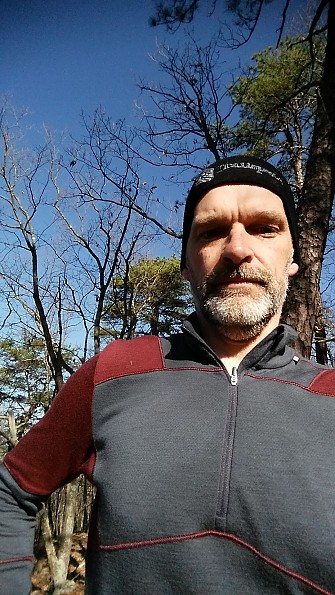
The base layer is a snug “athletic” fit and is true to the size chart. It worked well for me especially as it fits well under other layers, but may not work for everyone. I have dropped about 15 pounds over the last year or so, and I doubt this would have fit me as well back then. If you tend to need some room for middle aged spread, I would go one size up.

The hip-length top overlaps with the bottoms by about six inches—just right for my torso size of 22 inches. I found it hit that balance of long enough not to untuck when bending and not having so much material that it bunched up.

The arm sleeve length was just about perfect for me as well (again my arm length is around 23 from shoulder point to wrist)—just long enough to keep me warm but not stick out past my outer shell in bad weather and soak up some rain.
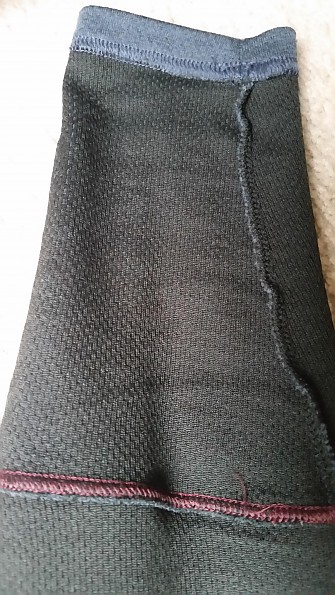
The flat lock seams look like they would feel uncomfortable and cause irritation, but I didn’t notice them at all. In fact, the LIFA Merino material is so comfortable, I rarely noticed I was wearing this base layer.

There was no irritation around the shoulder straps either.
I found myself wearing the top base layer a lot around the house this winter and for quick jaunts outside where I didn’t want to throw on a jacket.
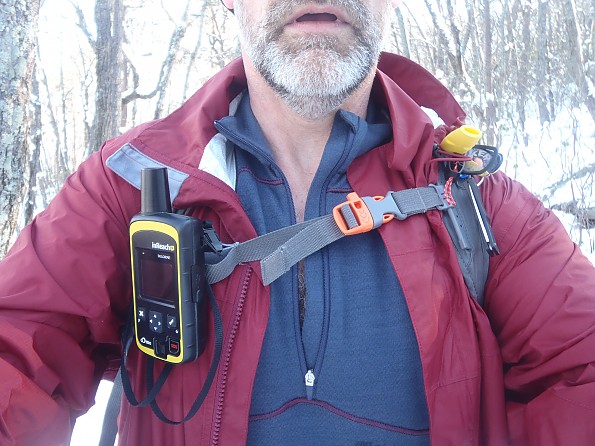
The zipper has a nice backing that does not allow chest hair to get caught in it, which I appreciate as I constantly zip and unzip along the trail to adjust to my workout and vent.
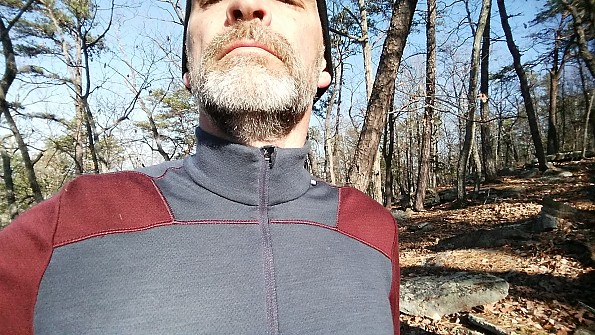
The collar is comfortable when zipped all the way up, and it keeps the neck warm. I found the collar comfortable whether unzipped or full zipped—just the right length not to interfere with my neck or short beard. Those furrier than me will have to test it themselves as I didn't have time or inclination to grow mine out.

The collar does tend to turn up on one side but this happens with some of my shirts and fleeces too. It is probably due to poor laundry/folding skills.
As the top is an athletic cut, I was wondering how it would perform with twisting and turning, so I made sure to spend some time scrambling off-trail through rhododendron thickets and mountain bogs…one of my favorite hobbies. This pastime doesn’t lend itself well to photo ops as I bury my camera and/or phone in the pack for protection. Here are a few simulated photos...

The top takes twisting well and “reseats” itself just fine. It did not come untucked during my excursions, but I could see someone with a longer torso needing just a bit more length. I would guess the length of my medium top would be good to about a 24-inch torso at best.

When reaching up the top also stayed tucked in for me and didn’t seem extremely tight. Again, your mileage may vary as fit is very personal.
Breathability/Warmth/Layering
The HH base layers breathe really well. The downside to this is you can feel a strong breeze coming through, but they dry out fast compared to pure Merino wool and work well with either an insulated or non-insulated wind shirt on top.
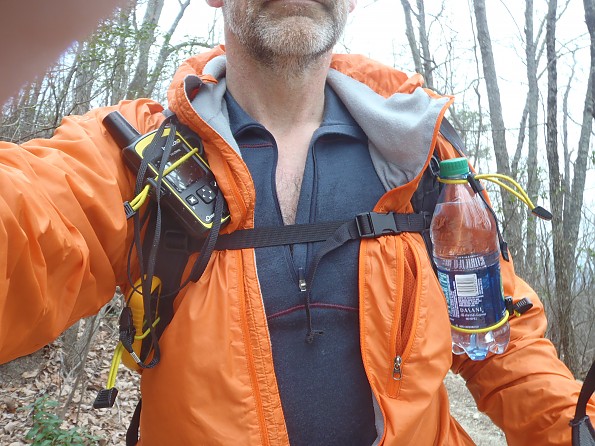
I regularly wore the HH LIFA Merino top with a windshirt or rain jacket in temperatures from around 10 to 50 degrees F. Above that I would switch to a cooler layer.
The two-in-one layer system seemed to work really well. I can generate sweat with a minimal amount of exertion well below freezing. In fact I am sweating right now just thinking about warmer weather.
Note that the different colored panels are cosmetic, and do not correspond to more breathable areas, that I am aware of or could tell during testing.
Sweat is wicked away from the body quickly and moved to the outer Merino layer (difficult to see but the center of the top is sweaty). It quickly dried. I never timed it in the field but on a recent day hike when the last hour or two got up to around 50 I was really moving. The top was soaked. I got in the car, turned mild air on, and it was dry within 15 minutes.
The warmth for weight is better than my older Capilene base layers. I never got cold (with appropriate layering) and being damp did not make it colder.

During a trip with 48 hours of rain, the base layers never dried out overnight as it was 100% humidity and misting everywhere. I put on both base layers wet on that 20 degree windy morning and they warmed me up right away (after that initial shock of course). Should have taken a picture, so you will have to settle for my sock photo as proof that it was pretty cold...
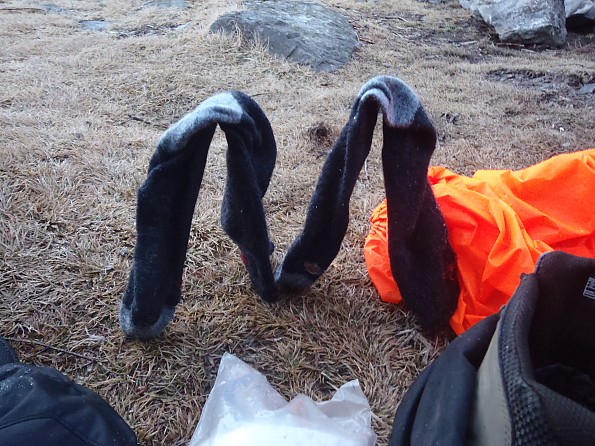
The half zip top is my favorite style of base layer or fleece. It quickly allows me to vent heat without dealing with a full length zipper—if I have to open something all the way it's time to change anyway.

The HH top performed well in this area and I felt immediate “relief” when I unzipped.
My layering approach is difficult to describe as it is not one setup of three layers but a combination of different items depending on the expected weather (worst case), season, terrain, etc. I found the HH base layers fit easily into my system due to the athletic cut under other layers. I shift a lot when temps change so here are some examples from my notes of trips in a variety of conditions along with which base layers (top, bottom, or both) and other layers were worn.
Many hikers will be familiar with the stench that quick-drying clothes generate after a short time on the trail. I decided to test this by not washing these for a solid week. After the week of heavy day hiking—7 to 10 miles per day for 5 out of the 7 days—there was still no significant smell. Don’t take my word for it—these passed the wife test as well and she is much more sensitive to things like that (or she “smells more than I do” as we often joke).
I washed both base layers per instructions and hung them out to dry. Inside my house, they dried overnight every time. Except on the 48-hour rain trip, there was significant drying when I hung them out in camp and mostly they came out dry by morning or slightly damp but warm.
Make sure the collar is settled when drying or it has a tendency to turn up (as mentioned above that is a common problem for me so I think it is my own fault as mentioned earlier).
Construction/Durability
I found the HH LIFA Merino base layers to be well constructed and so far have noticed no wear in them. All the photos above are from the end of my testing, not new out of the box.

There were a few loose ends on the seams but they were snipped off and did not cause any issues. I see a lot of loose ends on clothes now so don’t know if that is a common “thread” in clothing manufacturing.

One pet peeve (common to many clothes) is the amount of tags. I know this is so HH can provide washing instructions in several languages, but I wish there was a better way of doing this.
I feel compelled to add that there is no hood and no thumb loops on the top. I don’t find that a problem, as I have never liked either on my base layers, but that is personal preference and therefore mentioned for completeness. The sleeves did not ride up during strenuous activity.
Recommendation
The HH LIFA Merino base layers are excellent for colder conditions. While untested in this review below zero degrees F, I found them more than adequate for temperatures down to around 10 degrees, with appropriate other layers of course. I would continue to test them in lower temperatures as I don’t think I reached their lower limit, and confidently recommend them for others with the waiver that you should use caution in these temperatures and combine them with other appropriate layers for the conditions as well as your metabolism.
If allowed to keep these layers on conclusion of this test period, they will be my primary base layer for walking across wet and windy Scotland in May. I don’t think I could provide a higher recommendation!
Thanks to Helly Hansen and Trailspace for the opportunity to test the LIFA Merino base layers.
Source: received for testing via the Trailspace Review Corps
(Sample provided by Helly Hansen for testing and review)
Your Review
Where to Buy
You May Like
Specs
| Men's | |
|---|---|
| Price |
MSRP: $100.00 Historic Range: $52.50-$104.00 |
| Women's | |
|---|---|
| Price |
Historic Range: $49.73-$100.00 |


